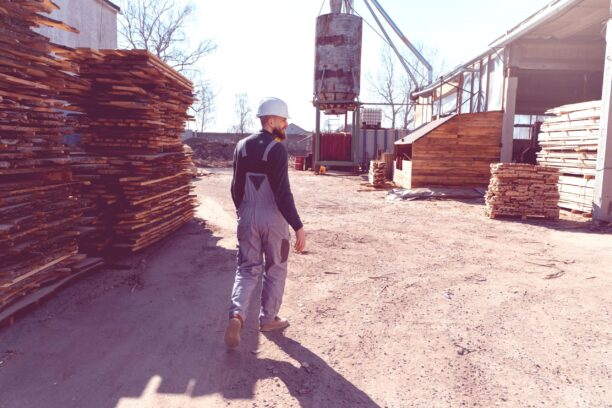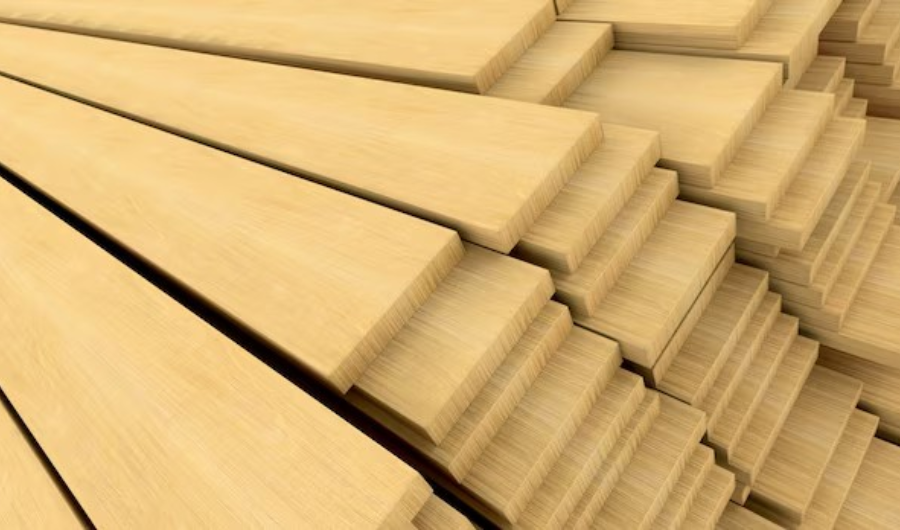Wood has been utilized as a key building material for thousands of years because of its abundance, adaptability, and sustainability. In recent years, there has been a surge of interest in lightweight wood materials, spurred by the need for sustainable construction and industrial solutions. Lightweight wood has various advantages over regular lumber, such as lower transportation costs, faster construction times, and increased energy efficiency. In this post, we’ll look at the advantages, applications, and developments of lightweight wood in several industries.
What is Lightweight Wood?
Lightweight wood is defined as wood products that have been developed or changed to minimize density while retaining structural integrity and strength. These materials are usually created by processing natural wood fibres or particles and mixing them with adhesives or other additives to form composite panels or boards. The resulting lightweight wood products have a high strength-to-weight ratio, making them suitable for a variety of applications.
Benefits of Lightweight Wood
Sustainability
One of the most significant advantages of lightweight wood is its sustainability. Engineered wood products allow manufacturers to make the best use of timber resources while minimizing waste. Furthermore, lightweight wood panels can be created from fast-growing species or agricultural waste, lowering the environmental impact of construction and manufacturing processes.
Reduced Transportation Costs
Lightweight wood resources are much lighter than standard lumber, therefore they take less energy to transport. This can result in decreased transportation costs and fewer carbon emissions from shipping and logistics. Furthermore, the lightweight nature of these materials makes them easier to transport and install on construction sites, increasing productivity and lowering labour costs.
Faster Construction Times
Because lightweight wood panels are constructed off-site, they help speed up the construction process and cut build times. Prefabricated components can be produced to exact specifications in a controlled environment, reducing on-site errors and delays. This can be especially useful for projects with short deadlines or in places with limited access to skilled workers.
Energy Efficiency
Lightweight wood products provide great thermal insulation capabilities, which aid in the energy efficiency of buildings. Lightweight wood panels, by minimizing heat transfer through walls and roofs, can save heating and cooling expenses while also contributing to a more comfortable indoor environment. This can be especially advantageous in areas with extreme weather or high energy bills.
Applications of Lightweight Wood
Construction
Applications for lightweight wood products in commercial, industrial, and residential buildings are growing in popularity. They can be used on non-structural elements like cladding and insulation as well as structural elements like walls, floors, and roofs. For modular construction techniques, where prefabricated modules are put on-site to expedite the construction process, lightweight wood panels are also perfect.
Furniture and Cabinetry
The furniture and cabinetry industries highly value lightweight wood panels because of their versatile and aesthetically pleasing design. These materials may be polished, routed, and bent with ease to create unique furniture with elaborate designs. Additionally, lightweight wood panels can be combined with other materials, such as glass, metal, or plastic, to reduce overall weight and produce unique visual effects.
Automotive and Aerospace
A number of traditional materials, such as steel, aluminium, and fibreglass, are being replaced with lightweight wood composites in the automotive and aerospace industries. Because of their outstanding strength-to-weight ratios, these materials can be utilized to reduce total weight in cars and aeroplanes, improving both performance and fuel efficiency. Lightweight wood panels can be used for structural reinforcements, interior parts, and outside body panels under appropriate conditions.
Packaging and Shipping
In order to safeguard and move goods, the packing and shipping industries also use lightweight wood materials. Sturdy yet lightweight boxes, pallets, and packaging materials are frequently made from plywood and particleboard panels. These materials can be tailored to meet precise weight and size specifications, guaranteeing the effective and safe transportation of goods across a range of sectors.
Innovations in Lightweight Wood

Nanotechnology
Recent developments in nanotechnology have made it possible for scientists to create lightweight wood materials with improved qualities. Scientists have found a way to reduce the total weight of wood composites while simultaneously increasing their strength, durability, and fire resistance by adding nanoparticles. These nanocomposite materials have the power to completely transform a variety of industries, including manufacturing and construction.
3D Printing
The use of 3D printing technology in lightweight wood is another innovative field. Scholars are investigating methods for producing intricate, lightweight structures with low waste in additive manufacturing processes by utilizing wood-based filaments. Products made of 3D-printed wood offer distinctive design options and may be tailored to satisfy the particular requirements of manufacturers, designers, and architects.
Bio-Based Adhesives
Conventional wood composites frequently use synthetic adhesives, which may release volatile organic compounds (VOCs) or contain hazardous chemicals. Researchers are creating bio-based adhesives made of renewable materials including tannins, lignin, and plant proteins in response to growing environmental concerns. These environmentally friendly adhesives lessen the environmental impact of lightweight wood materials while providing performance on par with synthetic alternatives.
Conclusion
For a variety of uses in manufacturing, building, and other fields, lightweight wood products provide an affordable, adaptable, and ecological option. Lightweight wood products add performance, increase efficiency, and reduce weight, stimulating innovation and sustainability in global industries. Future applications and potential for lightweight wood should be even more fascinating as research and development in this area continue.
Read More : Best Hard Wood For Making Ladders And Furniture

